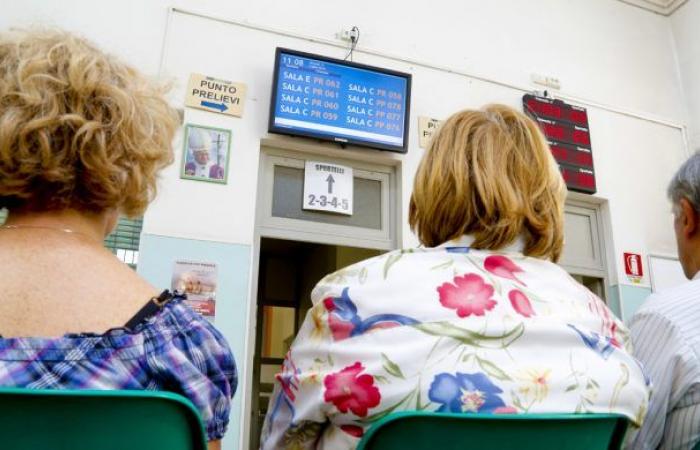The results of the CISL investigation relating to the “Health Service in Lombardy” were presented this morning, Friday 28 June, in Milan. Survey carried out by BiblioLavoro, the union’s research centre, to which 11,520 members responded.
The union’s investigation into the health service in Lombardy
The CISL survey refers to 2023 data, consists of 60 questions, and was organized on the basis of 7 thematic areas:
- Socio-demographic information of the interviewees
- Refusal of treatment
- Chronicity
- Experiences and critical issues in performing outpatient specialist visits
- Experiences and critical issues in carrying out tests
- Experiences and critical issues in carrying out scheduled hospitalizations and emergency rooms
- Experiences and critical issues related to Integrated Home Care
The investigation
Here are the main findings of the survey* presented by Francesco Girolimettodirector of BiblioLavoro.
Giving up on treatment
Over six out of ten respondents gave up (“sometimes” or “often”) on treatment in the last year. Only one out of five respondents with incomes over €50,000 gave up on treatment, compared to two out of three respondents in families with incomes under €15,000. Waiting times are the main reason for giving up treatment. Almost one out of two respondents gave up on treatment for economic reasons and over four out of ten for reasons related to the physical or organizational inconvenience of the health facilities.
Health services (visits and/or tests) between public and private
Eight out of ten interviewees have had at least one specialist visit in the last year. Six out of ten outpatient visits were provided in private facilities. Over half of the interviewees have used paid specialist visits. Of those who have had paid outpatient services, eight out of ten have used private facilities (only private or private affiliated), the remaining part benefited from freelance services (for a fee) in public structures. Similarly, among those who took at least one test in 2023, one in three went to private facilities affiliated with the National Health Service and almost one in four took tests in private facilities. Overall, among those who took paid instrumental diagnostic tests, more than eight out of ten went to private facilities.
The hospitalizations
Hospitalizations involved just over 10% of those interviewed. Seven out of ten hospitalizations were in public facilities. Hospitalizations in private facilities under the NHS were 24.7%, 4.5% were paid hospitalizations in private facilities.
Waiting times (visits, tests, hospitalizations)
The maximum time of a
Chronicity and home care
More than half of the interviewees have at least one chronic disease. One in five interviewees has two or more chronic conditions. Among patients with chronic diseases, the renunciation of treatment is numerous: approximately one in two people gave up treatment due to the inconvenience of the facilities or for economic reasons, while two in three people gave up due to waiting times. 7.2% of the interviewees resorted to integrated home care measures: of these, nine out of ten activated the ADI for a family member. Only 2.1% of the subjects with 3 or more chronic diseases declared that they had activated home care. Home care was mainly activated through the family doctor in more than seven cases out of ten, in the remaining cases it was a protected discharge following a hospitalization. The opinions of the interviewees who had benefited from a home care path, although overall quite positive, are critical regarding waiting times.
Family spending on health care
The average value of each family’s health care expenditure increases as income increases and age increases. The average expenditure in 2023 for visits, exams and hospitalizations was 951 euros, while that relating to other healthcare expenses (pharmaceutical, dental, physiotherapy, etc.) was 1,184 euros.
Waiting lists, the major criticality
“Constant dialogue with our members is the lifeblood that fuels our union – he comments Fabio NavaDeputy General Secretary CISL Lombardia – An ongoing comparison that allows us an organization that wants to be effective, starting from theirs has received numerous reports and requests relating to the topic of healthcare. People talk about it, people talk about it, and in this continuous talking about it, everyone builds their own opinion, their own point of view, their own scheme of priorities and needs. Waiting lists, in particular, have emerged as one of the critical issues most felt by citizens. For this reason, strengthened by past experiences, we are convinced of the need to use the online survey tool to collect in a structured way the evaluations of the members of the Cisl Lombardia”.
Concrete data to be used at regional tables
“The survey allowed us to obtain a clear and structured picture of the critical issues experienced by our members, providing us with concrete and reliable data to use during discussions at regional tables, giving us the possibility of formulating concrete and incisive union proposals – he adds Roberta Vaia, CISL Lombardy regional secretary – The response from our members was, as always, extraordinary. As many as 11,520 members participated in the survey, guaranteeing a detailed analysis of the problems related to access to healthcare in Lombardy. The data collected highlights renunciations of treatment due to excessively long waiting times, difficulty in accessing specialist visits, diagnostic tests and hospitalizations as well as deficiencies in integrated home care. This data represents a precious asset for our union. We will use them forcefully to advance our proposals in favor of a more efficient, fair and accessible Lombardy healthcare system for all citizens. CISL Lombardy’s commitment to protecting the right to health does not stop here. Also because, when the response of the Health Service to health needs does not guarantee for everyone that the waiting times for taking charge are adequate for the best clinical outcome of the treatment process, people’s choice of place and health professionals cannot be considered free. In fact, the main motivation that pushed the interviewees to prefer paid services was not the free choice of “where” and “by whom” to seek treatment, but a “forced” choice. We will therefore continue to monitor the situation carefully and promote concrete initiatives to improve the quality of healthcare in Lombardy”.






